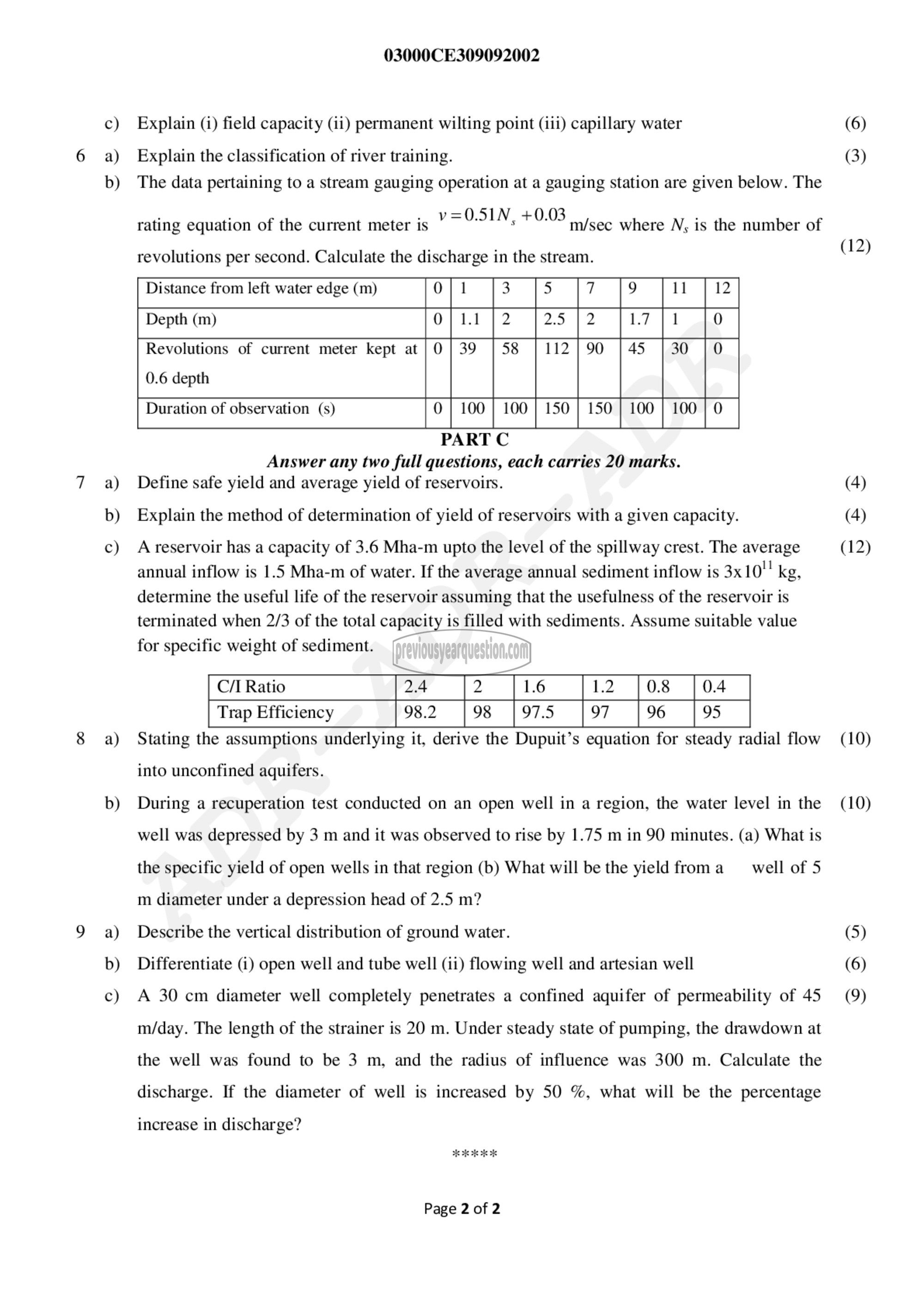APJ ABDUL KALAM TECHNOLOGICAL UNIVERSITY Previous Years Question Paper & Answer
Semester : SEMESTER 5
Subject : Water Resources Engineering
Year : 2020
Term : SEPTEMBER
Branch : CIVIL ENGINEERING
Scheme : 2015 Full Time
Course Code : CE 309
Page:2
a)
b)
a)
b)
a)
b)
0)
03000CE309092002
Explain (i) field capacity (ii) permanent wilting point (iii) capillary water
Explain the classification of river training.
The data pertaining to a stream gauging operation at a gauging station are given below. The
v=0.51N, +0.03
rating equation of the current meter is m/sec where ۸۷, is the number of
revolutions per second. Calculate the discharge in the stream.
Distance from left water edge (m)
Depth (m) 112 25121170
Revolutions of current meter kept ൧039 | 58 (11290 | 45 | 30
0.6 depth
Duration of observation (s) 0 | 100 | 100 | 150 | 150 | 100 | 100 | 0
PART C
Answer any two full questions, each carries 20 marks.
Define safe yield and average yield of reservoirs.
Explain the method of determination of yield of reservoirs with a given capacity.
A reservoir has a capacity of 3.6 Mha-m upto the level of the spillway crest. The average
annual inflow is 1.5 Mha-m of water. If the average annual sediment inflow is 3x10'' kg,
determine the useful life of the reservoir assuming that the usefulness of the reservoir is
terminated when 2/3 of the total capacity is filled with sediments. Assume suitable value
for specific weight of sediment.
C/I Ratio
cm 9
Stating the assumptions underlying it, derive the Dupuit’s equation for steady radial flow
into unconfined aquifers.
During a recuperation test conducted on an open well in a region, the water level in the
well was depressed by 3 m and it was observed to rise by 1.75 m in 90 minutes. (a) What is
the specific yield of open wells in that region (0) What will be the yield froma 1௦75
m diameter under a depression head of 2.5 m?
Describe the vertical distribution of ground water.
Differentiate (i) open well and tube well (ii) flowing well and artesian well
A 30 cm diameter well completely penetrates a confined aquifer of permeability of 45
m/day. The length of the strainer is 20 m. Under steady state of pumping, the drawdown at
the well was found to be 3 m, and the radius of influence was 300 m. Calculate the
discharge. If the diameter of well is increased by 50 %, what will be the percentage
increase in discharge?
Page 2 of 2
(6)
(3)
(12)
(4)
(4)
(12)
(10)
(10)
(5)
(6)
(9)
